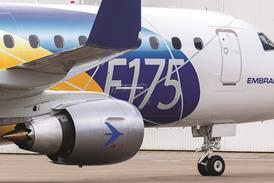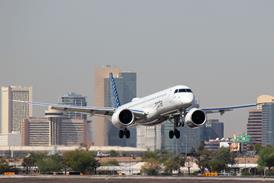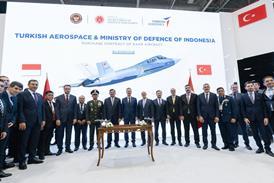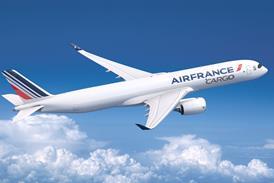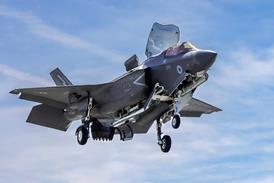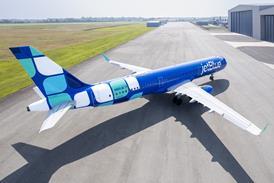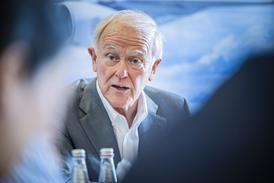Margins are tightening in airframe maintenance. The consequence is a clear trend among major maintenance, repair and overhaul providers to prioritise the more lucrative areas of component and engine maintenance. However, the labour-intensive spanner work cannot simply be abandoned. "We are not excluding anything because our customer cannot exclude some of the services," says August Henningsen, chief executive of Lufthansa Technik, which draws 60% of its maintenance volume from third-party customers. "He simply has to have a partner which is able and in a position to competitively service the whole range of services needed to safeguard his operation."
Lufthansa Technik's solution has been to push airframe work from its Hamburg base to lower-cost centres in Hungary, Malta, Bulgaria and the Philippines, as part of its "global network" strategy. A similar evolution has occurred at Europe's other colossal airline-affiliated MRO provider, Air France Industries, which merged with KLM Engineering & Maintenance in 2004, and which today draws 35% of its volume from third parties.
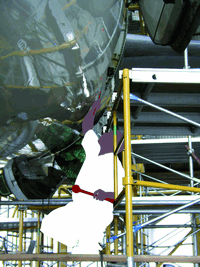 |
|---|
"There has been a shift from part of the services we used to provide the market with to other, more profitable services in Europe," says Air France Industries executive vice-president business development Bruno Delile. "And at the same time we entered into some partnerships to find solutions for heavy airframe maintenance. In components, we grow our business 15% every year. This impact is somehow hidden by what we do on the airframe side."
Airframe maintenance appears to be losing its allure not just in Europe, but in the US: Delta Air Lines' maintenance unit Delta TechOps has entirely sub-contracted its heavy maintenance, with Aveos (formerly Air Canada Technical Services) among the beneficiaries. However, some operations in South America and Asia are looking to scale up their airframe capabilities. In 2007, ST Aerospace sought to capitalise on China's low labour rates when it launched Shanghai Technologies Aerospace Company (STARCO) as a joint venture with China Eastern Airlines, investing $38 million in a new hangar at Pudong Airport. Scheduled to open in mid-2009, the hangar will be capable of simultaneously accommodating three narrowbodies and two widebodies (including the Airbus A380). It will bring ST Aerospace's total hangar capacity to 45 narrowbody and 27 widebody slots.
Meanwhile, VEM, the Brazilian MRO provider that emerged from the bankruptcy of Varig, plans to open a new hangar capable of accommodating six widebodies in Rio de Janeiro in 2010. Portuguese airline TAP acquired a controlling interest in VEM in 2005, and uses its facilities to achieve airframe volume growth that is impossible at its capacity-constrained Lisbon facility, at a lower labour cost.
 |
|---|
"There's been a shift from part of the services we used to provide to more profitable services"Bruno DelileEVP, Air France Industries |
"Our main interest is full-maintenance contracts," says Jorge Sobral, TAP's director of maintenance, who oversees a business that draws 50% of its volume from third parties. "We do need the airframe business because it's very interesting from the point of view of a package. But if you take it in segments, the airframe business is not that interesting...We count on VEM to do some airframe work - there is the same margin for it there."
Characterising Latin American airlines as particularly price sensitive, VEM vice-president of sales and marketing Nestor Koch puts a figure on his target margin: "When we reach 10% we are really happy."
Amid the boom in aircraft orders from its petrodollar-rich, state-owned airlines, the Middle East has been mooted as a major maintenance hub of the future, partly due to the grand plans of Dubai Aerospace Enterprise (DAE), a bold, $15 billion attempt to build an aerospace giant from scratch.
LOSING DIRECTION
DAE served notice of its MRO ambitions with the acquisition of US providers Standard Aero and Landmark Aviation. However, one industry commentator expresses concern that the organisation has lately appeared "rudderless" after the exit of senior executives and the abandonment of plans to establish a DAE University. One MRO chief executive even suggests that "the whole thing is unwinding".
Yet DAE was one of the three members of a consortium that acquired MRO giant SR Technics for $1.35 billion in 2006, the others being state-owned Dubai investment house Istithmar and Abu Dhabi equivalent Mubadala, which also owns Abu Dhabi Aircraft Technologies (ADAT), formerly GAMCO. The Mubadala link perhaps raises the prospect of an ADAT/SR Technics merger.
A familiar theme emerges when ADAT chief executive John Byers explains the strategy the company has pursued since its rebranding in May 2007. "We're trying to refocus the company on being much more of a total-care provider," he says. "Previously the company has been very airframe-maintenance-centric so we're trying to move the model to being much more across the value chain of MRO - engineering support, fleet management, configuration control."
Local competition is intensifying, says Byers, noting that JoRAMCo is firmly established, and that ST Aerospace, Lufthansa Technik and Air France-KLM have been eyeing opportunities in the region. "Bees are attracted to a honeypot, aren't they?"
Still, ADAT has capacity available for local work. "At the moment we're probably doing 1.8-1.9 million man-hours of airframe a year and probably only 40-45% of it is for local consumption. The rest of it we import from western and eastern Europe. There's an awful lot of capacity available here for the region."
ADAT has, however, exercised caution in scaling up capacity to meet forecast demand. Says Byers: "We're looking at reasonably proven demand in our capacity, like this new hangar we're putting in. We don't have any problems in filling that - we know just from demand that we're turning away from this point in time."
A Middle Eastern location carries the benefits of high availability of skilled labour and lack of exposure to the weak dollar, since the UAE dirham is pegged to the US dollar (a benefit until the dollar starts to rise in value, at least). The region's labour rate, meanwhile, reflects its geography: it's roughly halfway between those of Europe and Asia. "We are certainly not as cheap as China," says Byers.
However, western maintenance providers have struggled to gain access to China. "It is a very special market, so for a while we did try it, but then we just gave up," recalls TAP's Sobral. "I'm not saying it's not an interesting market, but it requires lots of patience and lots of money."
David Stewart, a principal at aerospace consultancy AeroStrategy, suggests that China will be "an MRO hub for itself, especially in the short- to medium-term", while Korea and Japan could become centres of excellence for some component and engine work. Airframe maintenance centres might emerge in Latin America and North Africa. "The big question is whether big European carriers will send heavy checks to Asia-Pacific because it hasn't been a very prevalent practice," says Stewart. "It's relatively well-established practice in the US to outsource but the Europeans haven't really got the bug."
FUEL PRICE EFFECT
One theory is that high fuel prices have made airlines reluctant to countenance long ferry flights. However, Delta TechOps chief executive Tony Charaf has no truck with this theory. "I have never witnessed someone saying, 'Well, I'm not going to send it to you because you are far away.' Maybe this used to be said 20 years ago but it's not any more."
In Europe, 47% of airframe maintenance is outsourced, with 76% of that staying in the region and 12% Asia-bound, according to TeamSAI figures published in April. In North America, outsourced airframe work makes up 64% of the total, and 26% of it goes to Asia. Asia outsources 56% of its airframe work, and 93% stays in the region.
Meanwhile, in engine maintenance, North America outsources 77% of work, Europe 71% and Asia 73%. While North America and Europe keep large majorities of outsourced work within their respective regions - 75% and 71% respectively - Asia sends a total of 45% to Europe and 28% to North America.
Globally, 53% of heavy maintenance work is outsourced, compared with 75% of engine maintenance, 77% of component maintenance and 16% of line maintenance.
As to the likely future structure of the maintenance, repair and overhaul industry, Stewart's expectation is that it will consolidate around four or five "global integrators", perhaps comprising Lufthansa Technik, Air France-KLM, ST Aerospace and SR Technics/ADAT. "They will invest to get a global footprint," he predicts. "Over the next 18 months, two years, you might see some reasonably priced acquisitions available, so more changes in ownership are likely."
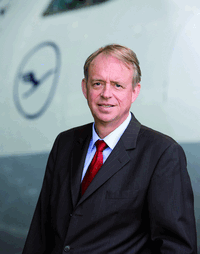 |
|---|
"We are not excluding anything because our customer cannot exclude some of the services"August HenningsenChief executive, Lufthansa Technik |
Delile of Air France Industries likewise sees room for consolidation in the market. "Most of the players have less than 10%," he says. "Even the biggest have less than 10% market share, so there's still room for consolidation in this market." He adds that the need for scale in MRO is such that partnerships between maintenance providers, such as Air France Industries' component partnership with Lufthansa Technik, are starting to become more common.
There's a broad consensus, however, that there will remain room for niche, independent players. But, in the absence of economies of scale, only dedicated, high-margin services would be viable for such players.
AeroStrategy has suggested the intriguing possibility that Boeing and Airbus may look to sell integrated MRO contracts to airlines placing orders for their next-generation single-aisle aircraft. Such contracts might include airframe/component maintenance, rotable logistics and fleet management.
Naturally, many in the market would not welcome such a move. Sobral equates it to competing with one's customers. "There was a serious problem, years ago, when the engine OEMs [original equipment manufacturers] entered the MRO business," he recalls. "I think everybody considers that to be a bad experience. So I think it is not going to be repeated." Sobral hails the Airbus MRO Network established by the airframer as "a good approach" to aftermarket involvement.
Meanwhile, Boeing's 787-focused lifecycle management programme appears to be struggling to find favour with customers, and a strategic rethink would seem likely.
STRONG INDEPENDENTS
Shifting focus to the engine maintenance sphere, independents such as MTU, Standard Aero and ST Aerospace are likely to remain "fairly strong", Stewart reckons, but the row over installing non-OEM (or third party spares manufactured) parts in engines will eventually come to a head. "The independents basically have to decide whether they're with the OEM or against the OEM."
In addition to varying by region, airlines' propensity to outsource naturally varies by fleet type. "Obviously the biggest segment of the market in terms of outsourcing of maintenance is the low-cost carriers," notes Tay Khiang Kok, president of ST Aerospace. "So on the narrowbody aircraft you find that the tendency is to outsource. And outsource providers like ourselves are able to offer total solutions, so they don't need to have a big management structure to manage that. For the larger new platforms, while historically most airlines tend to do work in-house on platforms such as the A330, A340, 777, etc, in the last five years I think that there is a trend for airlines to consider outsourcing, the latest being Singapore Airlines' acquisition of 19 A330s from Airbus. Although they have significant in-house MRO capabilities, they have decided to outsource everything on that platform, and the outsourcing is done through Airbus. We are fortunate to be one of the beneficiaries of that, but you see that many other airlines around the world continue to go in that direction."
As aircraft reliability and economics improve, the rationale to invest in in-house capability is reduced. "A third-party provider such as ourselves can make the same investment but support a much larger fleet from a mix of clients," argues Tay. "In that context, the cost ratio makes it uneconomic for people to try to do it themselves even if they want to." By the same logic, the efficiency of the newest airframes has created overcapacity in the mature markets - Europe and the US - with fuel price volatility speeding the process of fleet renewal.
Meanwhile, a new generation of airlines is emerging to which maintenance is decidedly non-core. "The trend is not that people who used to do their maintenance are now outsourcing," argues Sobral. "The real trend is that you are seeing a lot more small airlines popping up and, for them, it doesn't make sense from an economical point of view to do maintenance."
In Delile's experience many airlines still choose to outsource some types of maintenance on an ad hoc basis, rather than sign up to all-encompassing by-the-hour deals in which risk is neutralised under a fixed-price arrangement. "Most of the newcomers are looking for integrated solutions, but at the same time, they still split along the segments," he says.
"They look for by-the-hour agreements for component support but not as much for engines. Being very limited in cash they postpone some cost exposure later in the operations, so they take the risk and go for engine support on a case-by-case, engine-by-engine basis. Total support, or at least support that relies on different segments such as components, engines and airframe maintenance, happen from time to time but are not so common in the end."
MRO IN A RECECSSION
Opinion is divided on how severe will be the impact of the recession on the maintenance, repair and overhaul business. The optimists note that maintenance cannot be deferred for ever, or opine, very optimistically, that the MRO business has been decoupled from the airline industry.
Pessimists point to an oil price that remains punishingly high despite recent drops, and suggest that, combined with the spiralling financial crisis, this could bring airline bankruptcies and mass retirement of aircraft in 2009. Air France Industries executive vice-president business development Bruno Delile raises questions about "the profitability of some 10- to 15-year contracts that were signed in the past years, with optimistic assumptions", though he excludes his own company from such worries.
As ever, hard times will create opportunities for some. Delta TechOps, for example, sees potential for increased lessor business. "The market is shifting a little bit because on one had we can see that reduction in capacity is impacting our by-the-hour [engine maintenance] agreements," notes chief executive Tony Charaf. "On the other hand we see some improvements and growth with the lessors. We're doing quite a bit of work for ILFC, which is repackaging some of its airplanes and engines."
Delta TechOps has won both engine and airframe maintenance contracts from the AIG-owned lessor, and is now seeking to market nose-to-tail, "fleet-complete" maintenance services to the wider lessor community. "That is a very attractive value proposition for the lessors," insists Charaf, adding: "Lessor business can be tremendously complementary when we need it the most."
Source: Airline Business


